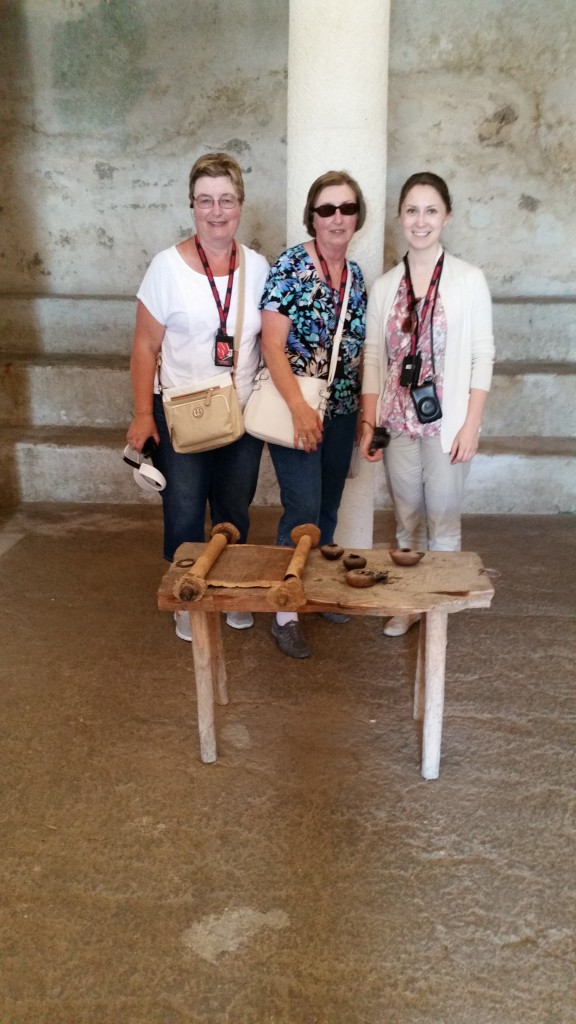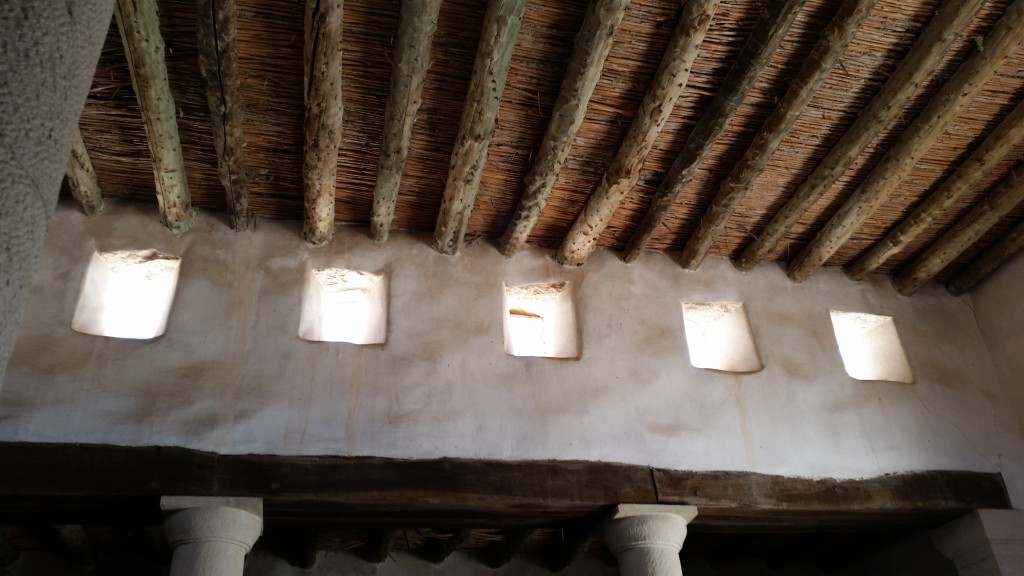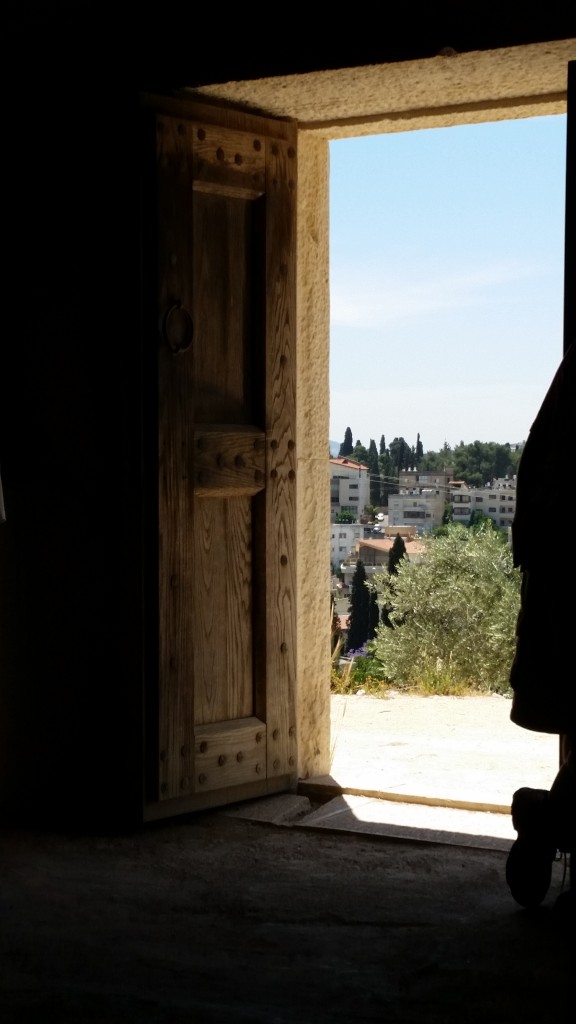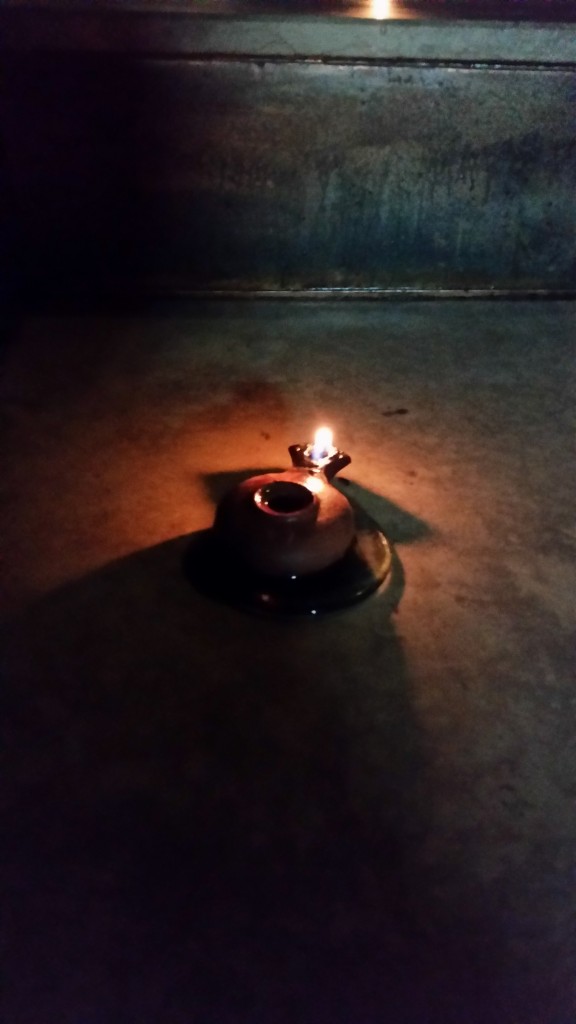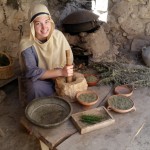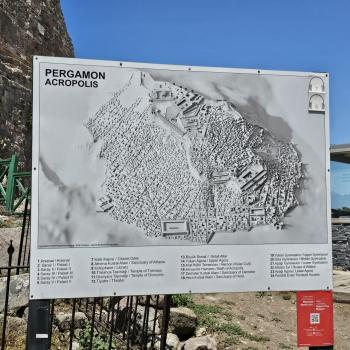There was a day when some more radical scholars were denying the existence of synagogue buildings in the first century, until Lee Levine and others put that myth to rest. We will be talking about the new find of the synagogue at Migdal in a later post, but here we get to look at the re-created one at Nazareth Village. Most ancient buildings, including synagogues did not have conventional windows, though they might have sky lights of a sort, but otherwise most of the light came in through the door, or from lamps hanging in the building.
The seating structure varied, but one ancient form, found for example at Masada, was tiered seats on three sides of the room.
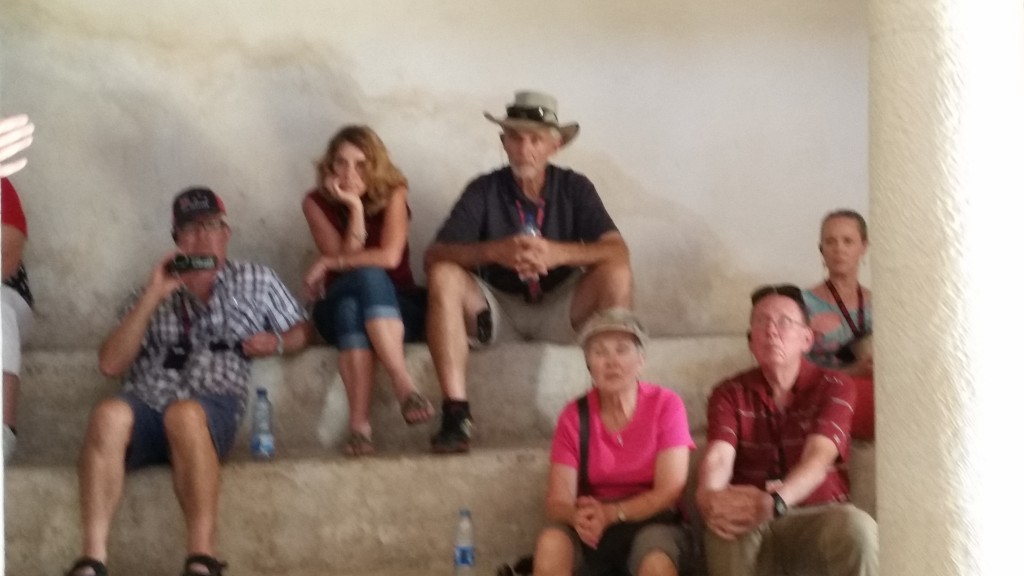
There would have been a Torah table of some sort on which a Torah scroll could be unrolled (see the later post on Migdal). If necessary there would be lamps to illuminate the scroll.
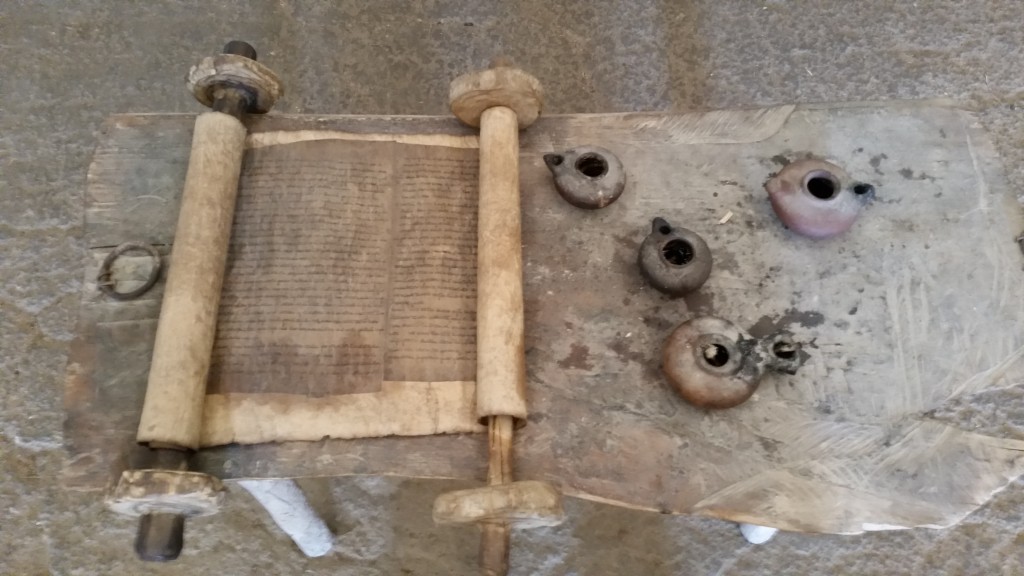
Normally there would be a scroll cabinet, or jars like those below in which the scrolls would be kept (jars like those found at Qumran).
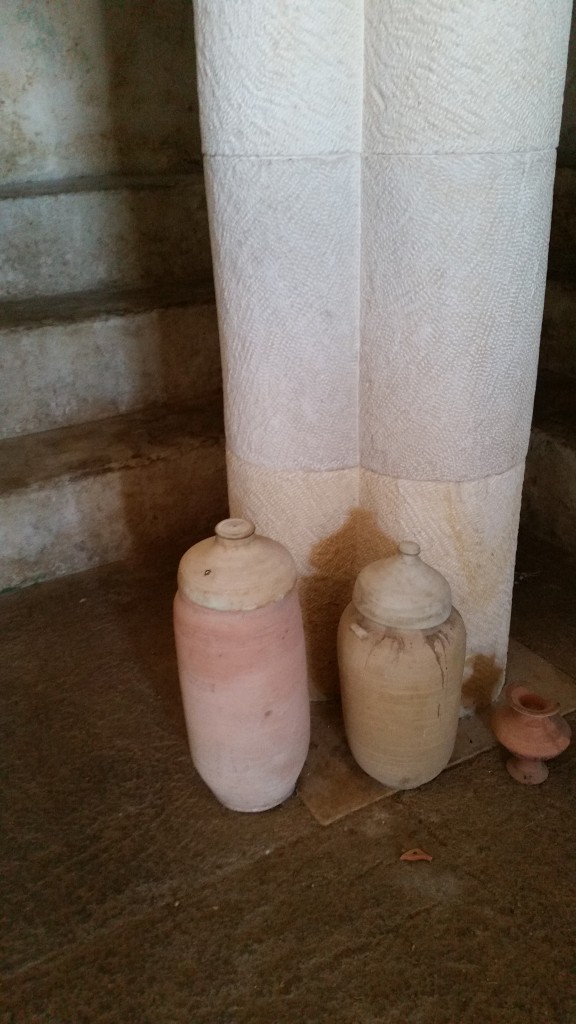
What you were not likely to see in a first century synagogue was three women waiting their turns to read the Biblical text. For one thing, few ancient women could read Hebrew. For another thing, there were those who said it was inappropriate for women to speak in the synagogue. These women however are well qualified— they are my wife’s sister Elaine, my wife Ann, and our Russian daughter Yuliya.
